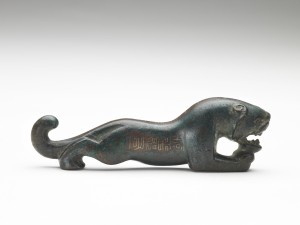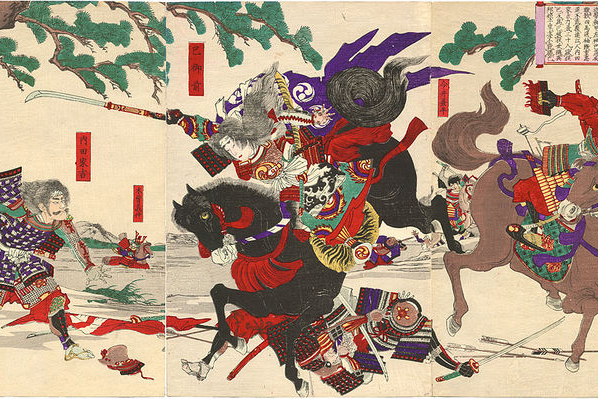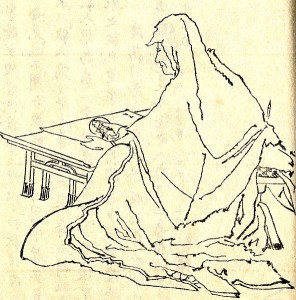Despite what Disney says, exactly no one was shocked when Hua Mulan rode to war. Peel back her legend’s Disneyfied veneer, and you find that the historical Mulan wasn’t an awkward INFJ on a reckless soul-searching road trip; but at seventeen, she knew both how to adult and how to annihilate her foes, for the simple reason that her loving father, being a responsible parent in the brutal 5th century CE, had trained her for years in the arts of war.

“You don’t meet a girl like that every dynasty.” Sorry to burst your bubble, Mr. Emperor, but you kinda do.
But she didn’t follow only her father’s instruction: Mulan’s path through the male-dominated military had already been paved by a few heroic Asian women. Mulan would’ve grown up hearing legends of the warlike high priestess Hao Fu, the rebel leader Mother Lü, and the general Li Xiu. She would’ve seen herself as part of this ancient tradition of women warriors. As a Chinese patriot after the Han Dynasty, she would’ve seen a narrow, Sinicized narrative; but if she’d widened her gaze, she could’ve claimed her place in the sisterhood of professional badassery that stretched from Tbilsi to Tokyo, deep into Asia’s matriarchal past, and forward into the globalized future.
One story Mulan might’ve known was that of the Trung Sisters.
Sister Power
Trung Trac and her little sister Nhi (c.12–43 CE) emerged from the Vietnamese jungle, dagger-axes strapped to their waists, a bloody tiger hide raised high over their heads. Everyone who saw the hide knew what it meant: like the man-eating tiger, the local Han Chinese prefect had executed Trac’s husband, Thi Sach; and now, just like Trac and Nhi had killed the tiger, they’d kill the prefect. After a century of Han Chinese occupation and brutal sinicization, the Vietnamese ached for their freedom; soon, 80,000 men and women, nobles and peasants flocked to the Trung sisters’ bloody banner.

“Give me liberty or give me death!” is epic enough as it is, but imagine it etched into a tiger pelt. Scary stuff.
At first, the Han Chinese didn’t seem to know what to make of Trac and Nhi. During the Han dynasty (206 BCE–220CE), a noblewoman like Trac would “to a nunnery go” after her husband’s death, while a lowly concubine would be hanged to accompany her lord and master to “the undiscovered country,” as it were. The colonial rulers’ failure to impose their patriarchal values on Vietnam became shockingly apparent as their almighty army tucked its tail and scarpered to China, the Trung sisters and their guerilla force nipping their heels.
With the Han Chinese gone, the Vietnamese exploded with joy, inaugurating Trac and Nhi as joint queens of an independent “Van Long.” The sisters abolished the oppressive Han Chinese system and, for two years, ruled peacefully according to the restored Vietnamese laws. But then the empire struck back: in 41 BCE, the Han Chinese returned with their best general and smashed the sisters’ army. Trac and Ninh refused to surrender and instead drowned themselves in the river, thereby preserving their—and Van Long’s—honor. Two thousand years later, Trac and Nhi’s courage and tiger-skin banner remain inspiring symbols of Vietnamese patriotism—and of what women can accomplish together.
Lady Samurai Smackdown
Women also wreak some serious havoc when working against each other—especially if trained as an onna-bugeisha or onna-musha, feudal Japan’s lady samurai. The former describes nearly every noblewoman in the Kamakura period: archaeological evidence reveals that while a daimyo was off smashing heads, his wife quite literally held the fort against rival samurai armies and ninja assassins alike—which suggests that to marry well, posh girls like Hōjō Masako (1156–1225) studied military strategy alongside their brothers. In contrast, onna-musha like Nakahara Tomoe (c. 1157–unknown), who accompanied male samurai on offensive campaigns, were about as common as “lobster claw” arcade games outside Japan.
Still, Masako and Tomoe had much in common: both received childhood instruction in hunting and horsemanship, fishing and fencing; both experienced the pressure to produce sons without compromising their battle-readiness; and due to changing Buddhist theology, both struggled against the increasingly “Gentlemen Only, Ladies Forbidden” nature of public life.
And they both fell for Minamato men. Just when Masako’s father had engaged his twenty-year-old spinster daughter to a respectable daimyo, Masako met Minamato Yoritomo, the rural Minamato clan’s exiled leader; as if on cue from a Hollywood Western, the clever spinster and wild outlaw fell madly in love. Horrified, Masako’s father tried to imprison her, but she broke out and eloped with her lover. As if you’d expect anything less from a woman trained to trounce ninjas.
Meanwhile, the beautiful Tomoe had grown up with Yoritomo’s younger cousin, Yoshinaka, and become his closest friend, favorite general, and beloved mistress, or gozen. So when the Genpei War erupted in 1180, Yoritomo led Yoshinaka and the rest of the Minamato clan in their struggle against the reigning Taira family. For three years, Tomoe and Masako fought on the same side: Tomoe and her troops would capture Taira castles, which Masako then transformed into impregnable Minamato fortresses.
But when Yoshinaka took Kyoto in 1183 and refused to bow to Yoritomo, Tomoe and Masako became rivals. We don’t know if they ever crossed naginatas; in fact, history has essentially forgotten Masako’s contribution to the war effort, preferring to endlessly romanticize the tragic tale of the beautiful “Tomoe Gozen.” But we do know that when the war ended with Yoshinaka dead, Tomoe fled, and the former old maid Masako became the most powerful woman in the land. For more than a decade, Masako ruled alongside Yoritomo, the first shogun of a united Japan; after his death in 1199, she proceeded to outwit her scheming father, eldest son, and other male relatives to preserve her power for twenty years. Military dictator she certainly was, but her popular rule as the “nun-general” fulfilled “the hopes of the people,” as Japanese historian Chikafusa wrote in the Jinnō shōtōki (1339). By the time she died peacefully in 1225, Masako had installed her native Hōjō clan in the shogunate. Thanks to Masako, the Hōjō family would create the medieval Japan we remember today.
The Wolf Mother
Meanwhile, the Mongolian Empire we remember today was a hot mess. By the time a Borjin girl called Manduhai (1449–1510) was born on the Central Asian steppe, the Mongols didn’t control their ancestral homeland, much less the territory her ancestor Genghis Khan had acquired from Beijing to Budapest. So when her husband, a khan, died, Manduhai was left at the age of 23 with no home, no family, no friends, and no allies. Unlike Trung Trac before her, she had no beloved sister to support her; unlike Nakahara Tomoe, she had no training in war; and unlike Hōjō Masako, she had no political education and no son, and thus no right to declare herself regent.
But she also had no one to stop her.
Instead of choosing a comfortable life in a sultan’s harem or Buddhist monastery, Manduhai forged her own path: she would track down seven-year-old Batu Mongke, Ghengis Khan’s last living male descendant, and make him the Great Khan. By marrying him, she’d retain her title of “Khatun”; together, they might just have enough clout to reunite the Mongols and reclaim their homeland. So in 1470, Manduhai formally wed the ailing little boy before a handful of tribal leaders at the Shrine of the First Queen. Swearing by the dead queen’s spirit, she charged the Mongols to tear her limb from limb if she ever reneged in her duty or failed in her quest. Despite her lack of experience, the Mongols rallied to her symbolic rhetoric and reckless spunk. Suddenly, she didn’t just have allies: she had an army—and for all practical purposes, Manduhai was Khan.
For the next three decades, Manduhai Khatun hounded her goal. She led her troops into battle herself, dressed as a man, her regal boqta headdress set aside so she could reach her quiver. Like Disney’s Mulan, Manduhai was such a complete noob in her first battle that she knocked off her own helmet and nearly died. But she learned—fast. And everything she learned, she taught to Batu Mongke. Together, the brash queen and broken boy rode west to re-conquer the Oirat, then south to reclaim Silk Road outposts, then east to raid Ming China. Over the next decade, she turned Batu Mongke from a traumatized child into a talented soldier and (ahem) her boy toy. When he was 19 and she 33, Manduhai rode to war while pregnant—with twins!
Seven years and six kids later, Manduhai retired from active military duty to focus on raising her kids and securing trade treaties with her former foes. She’d transformed herself from hopeless rookie to honored ruler, fully earning the title “Manduhai the Wise.” By the time she died in 1510, she’d arguably built a larger empire on her own volition and military skill than any other woman in history.
Yet when it comes to Asian women warriors, Hua Mulan has clearly stolen not just her father’s armor, but also the whole show. We Western feminists love the Disneyfied version of her tale because its awkward rebel heroine is so relatable. But Trac, Nhi, Masako, Tomoe, and Manduhai are all relatable: they’re not just faces on postage stamps, but also real women; they’re not just fighters, but also lovers, sisters, daughters, and mothers, worthy of infinitely more intersectional feminist fangirling than they’ve received. Mulan can keep her armor, but it’s time she shared the spotlight.
To do some further reading on non-western history and cool women, check out:
- Chieko Irie Mulhern, Heroic with Grace: Legendary Women of Japan (Routledge, 2015)
- Jack Weatherford, The Secret History of the Mongol Queens (Crown, 2010)
- Patricia M. Pelley, Postcolonial Vietnam: New Histories of the National Past (Duke University Press, 2002)
- Stephen Turnbull, The Samurai Swordsman: Master of War (Turtle Publishing, 2008)
Elaine K. Phillips wrote a big fat thesis on transmedia storytelling for her MA in Publishing at Oxford Brookes University, but she prefers to pen magazine features and adventure tales. She finished her first (bad, bad, bad) science-fiction novel at eleven and is currently writing an alternate history sci-fi novel that weaves together the fifteenth-century Plantagenet, Ashikaga, and Zhu dynasties. She’d love to chat with you about new media, history, or tech via Twitter (@elainekphillips) or her website.
Header image and images of Masako, Tomoe, and Mongolian Armor via Wikimedia Commons (1)(2)(3)(4). Image of Mulan via Walt Disney Studios. Image of Han Dynasty Tiger via The Smithsonian’s Freer Gallery of Art.





